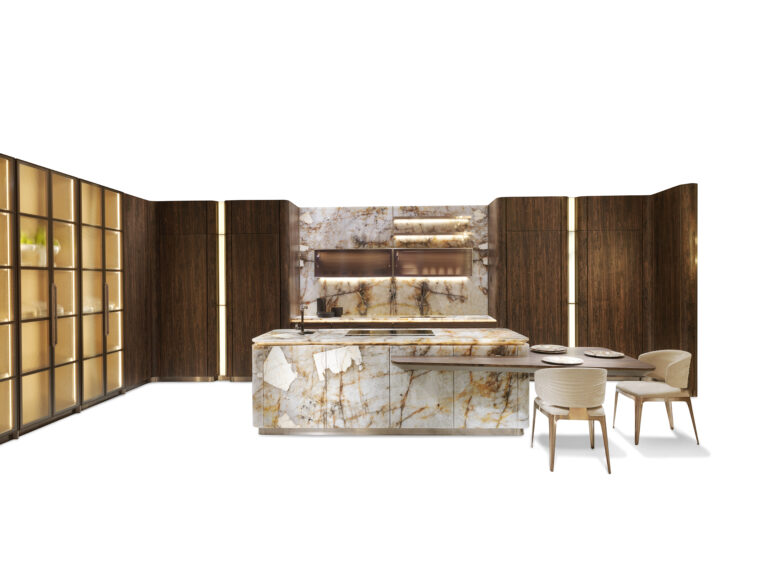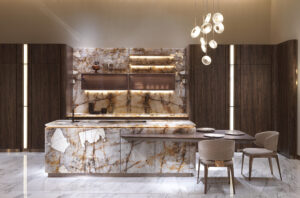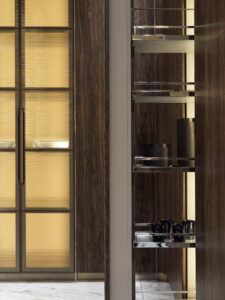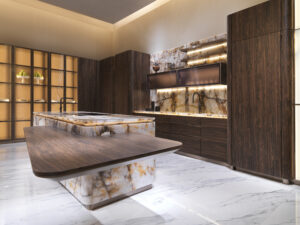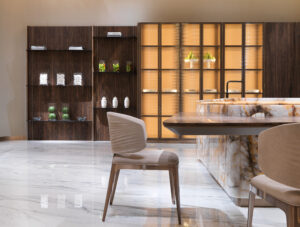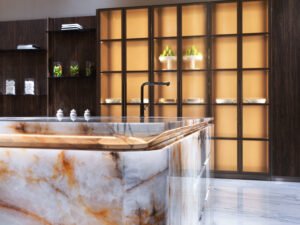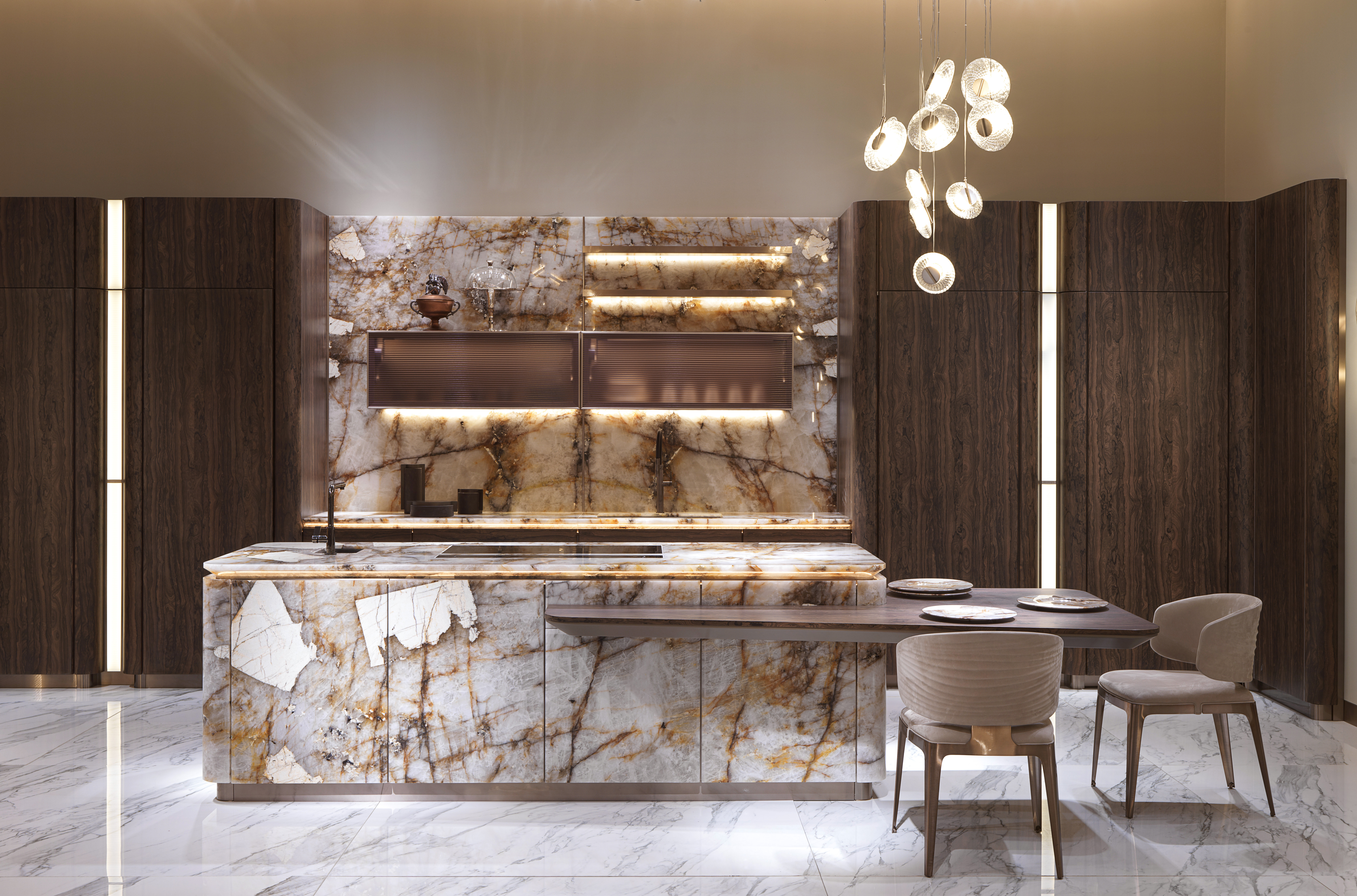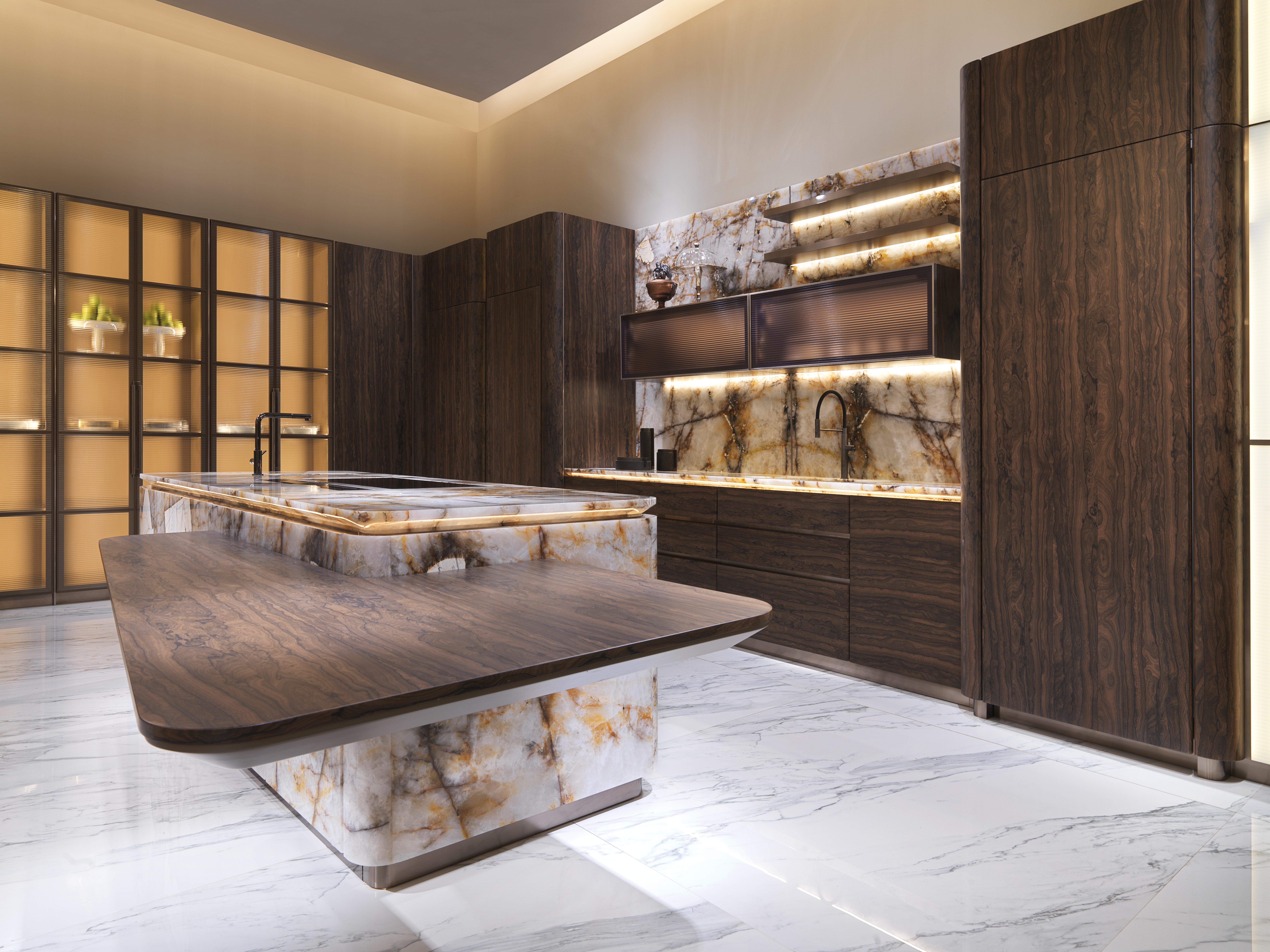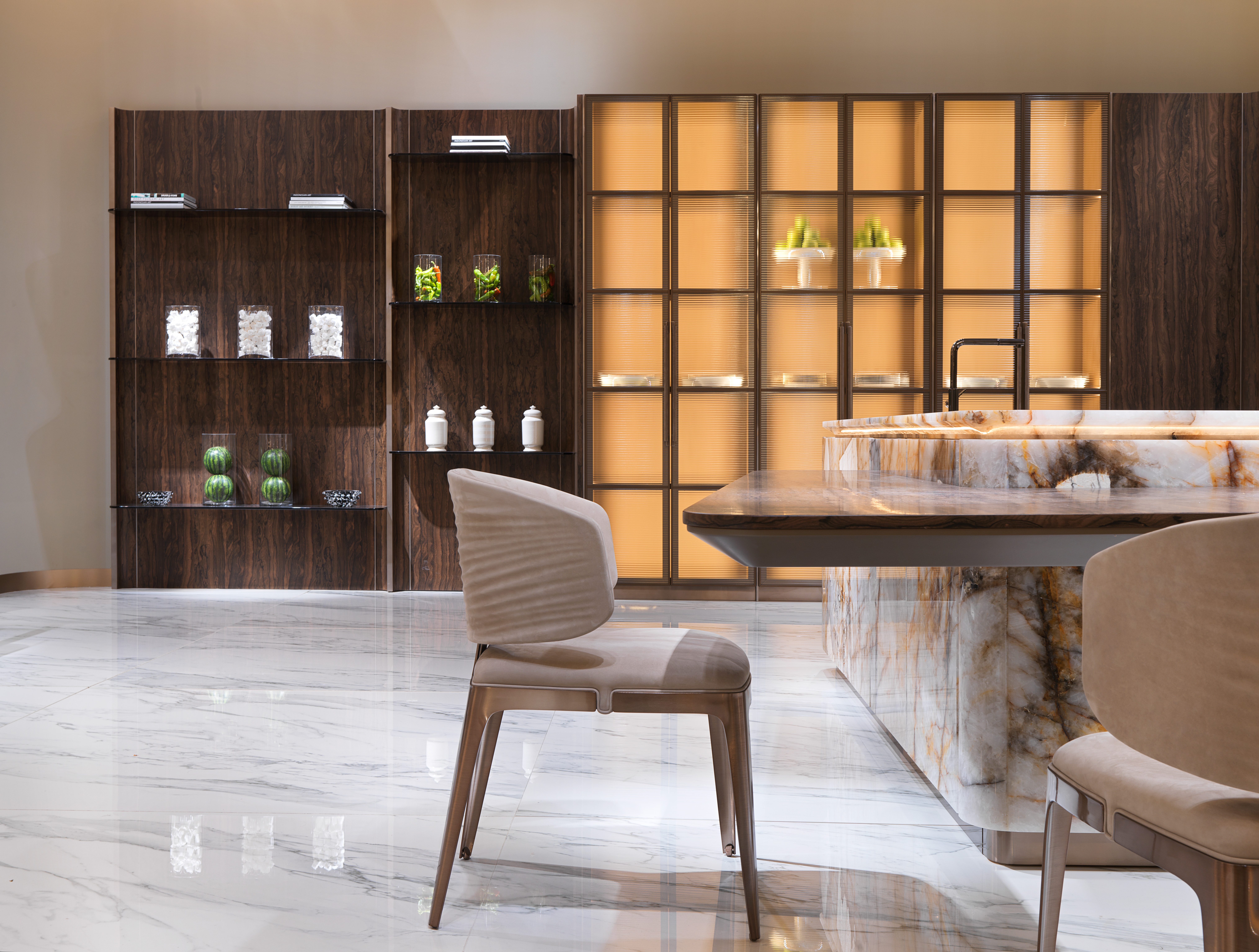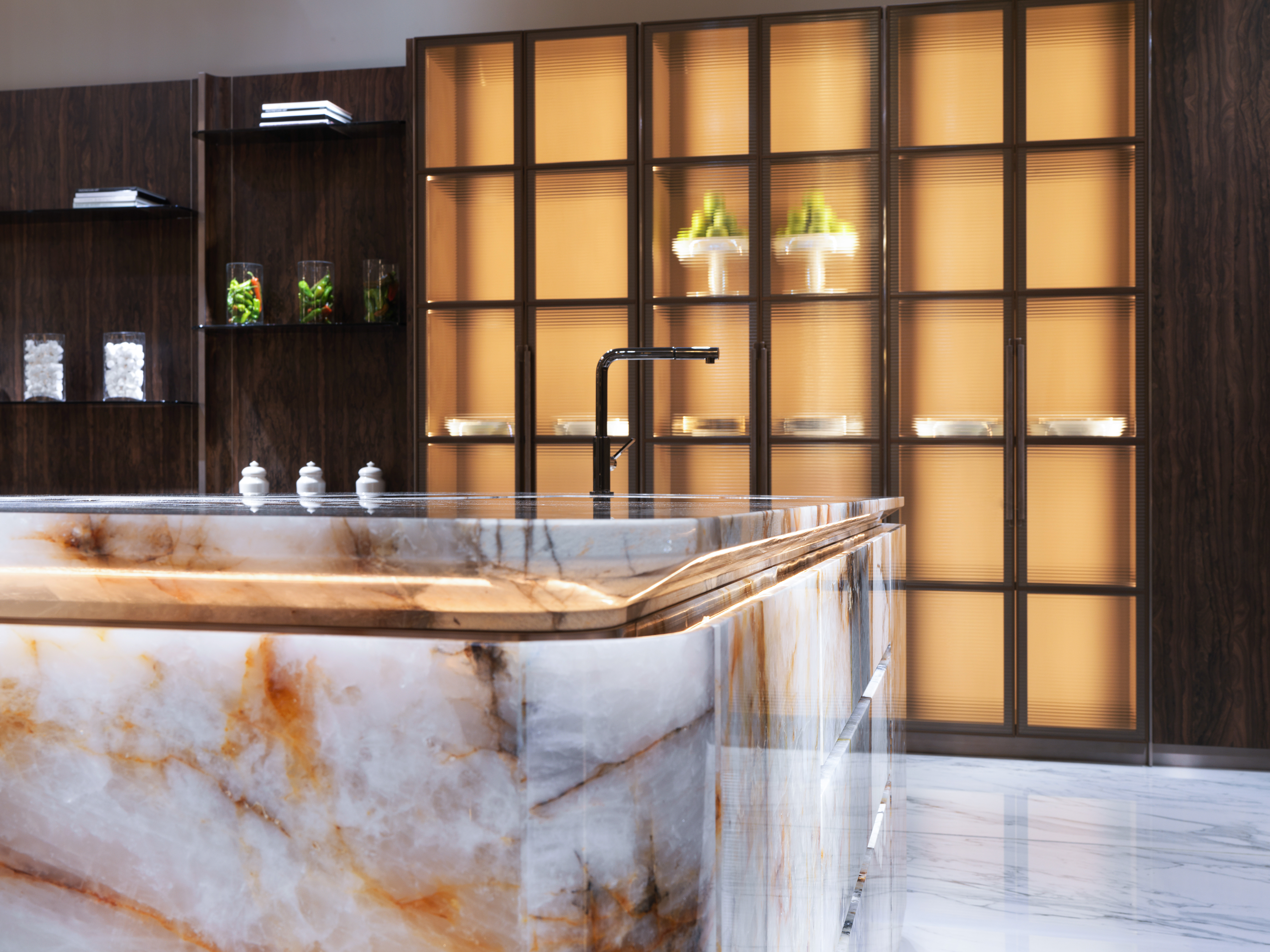VILLA D’ESTE
Kitchens
The kitchen project pays homage with its name to Villa D’Este, theater of culture, pleasure, well-being and happiness. An Italian asset appreciated all over the world, a viaticum of imagination and audacity; a vision of the future born from the fervent, eternal architectural imagination. The architect intended Villa d’Este as a true “dry / show kitchen”, a natural landing place for furnishing aspirations.
A “enjoying” cuisine that is happiness in the sharing of flavors, aesthetics and space, in the pleasure of extending the time for the most complete conviviality, in the sacredness of preparation, where taste and creativity are sublimated.
From the very first encounter, Villa d’Este seduces with its concave and convex forms and its bold, contemporary rendition of classic design techniques, with an unmistakable devotion to fine craftsmanship and attention to surprising and delightful details. Two of the main players in this visual theater are the Tivoli boiserie and the central island. The Tivoli boiserie is the skin of the whole and the dry kitchen’s design signature. Underlining the connection and communication between the kitchen and living room, the boiserie integrates doors and wall units, shelves and built-in lights, opacities and transparencies, defining both food preparation niches and cooking surfaces.
The central island, acts as a reference point for the entire kitchen. The energy that radiates out from this focal source, facilitates the exchange of knowledge and collaborative endeavor, contributing to the rituals and celebratory relationships of the kitchen – preparing, transforming, savoring, sharing with ease, uniting spirits, joyful creation, creating joy.
The finest materials and finishes complete the projects: American ziricote wood Patagonia quartzite, placed in dialogue with the sparkling brilliance of the faceted engraved glass, in addition to the luminous lines wisely carved and integrated into the depths of the boiserie. A new standard for the rediscovered importance of the daytime domestic space as a crucial realm for daily well-being: this is the Villa d’Este kitchen.
Mario Lipparini
The kitchen project pays homage with its name to Villa D’Este, theater of culture, pleasure, well-being and happiness. An Italian asset appreciated all over the world, a viaticum of imagination and audacity; a vision of the future born from the fervent, eternal architectural imagination. The architect intended Villa d’Este as a true “dry / show kitchen”, a natural landing place for furnishing aspirations.
A “enjoying” cuisine that is happiness in the sharing of flavors, aesthetics and space, in the pleasure of extending the time for the most complete conviviality, in the sacredness of preparation, where taste and creativity are sublimated.
From the very first encounter, Villa d’Este seduces with its concave and convex forms and its bold, contemporary rendition of classic design techniques, with an unmistakable devotion to fine craftsmanship and attention to surprising and delightful details. Two of the main players in this visual theater are the Tivoli boiserie and the central island. The Tivoli boiserie is the skin of the whole and the dry kitchen’s design signature. Underlining the connection and communication between the kitchen and living room, the boiserie integrates doors and wall units, shelves and built-in lights, opacities and transparencies, defining both food preparation niches and cooking surfaces.
The central island, acts as a reference point for the entire kitchen. The energy that radiates out from this focal source, facilitates the exchange of knowledge and collaborative endeavor, contributing to the rituals and celebratory relationships of the kitchen – preparing, transforming, savoring, sharing with ease, uniting spirits, joyful creation, creating joy.
The finest materials and finishes complete the projects: American ziricote wood Patagonia quartzite, placed in dialogue with the sparkling brilliance of the faceted engraved glass, in addition to the luminous lines wisely carved and integrated into the depths of the boiserie. A new standard for the rediscovered importance of the daytime domestic space as a crucial realm for daily well-being: this is the Villa d’Este kitchen.
Mario Lipparini

